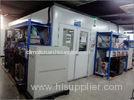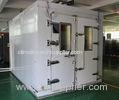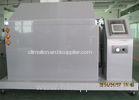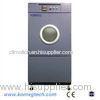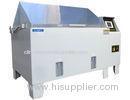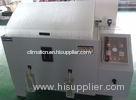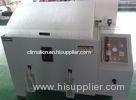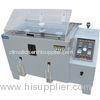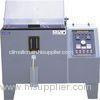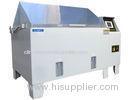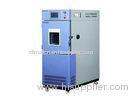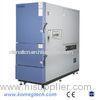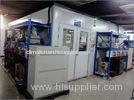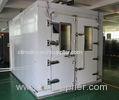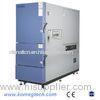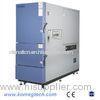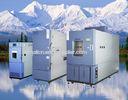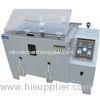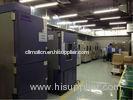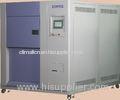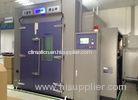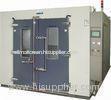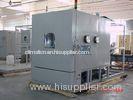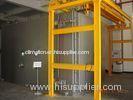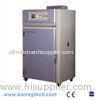Military Environmental ESS Test Temperature Cycling Chamber 10 C /Min
| Place of Origin: | Zhejiang, China (Mainland) |
|
|
|
| Add to My Favorites | |
| HiSupplier Escrow |
Product Detail
Military Quality Standard ESS Test 10 ºC /Min Rapid-Rate Thermal Cycling Chamber
<
Military Quality Standard ESS Test 10 ºC /Min Rapid-Rate Thermal Cycling Chamber
1. Advantages of Temperature Cycling:
Many independent studies have been conducted analyzing the effectiveness of various types of ESS processes. Conclusive data has been compiled by many manufacturers of electronic assemblies supporting today's thinking that temperature cycling is the most effective type of screening process.
While it has been demonstrated that both temperature cycling and random vibration together is the most effective screen in terms of identifying latent defects, if a single screen is to be used, temperature cycling is considered to be the single most effective screen in identifying latent defects. According to the ESSEH guidelines, temperature cycling regularly detected an average of two-thirds more latent product defects than with random vibration alone, which is ranked second most effective in identifying defects.
Stress uniformity is without question the most important aspect of the screening process. Temperature cycling provides the additional advantage of a uniform stress environment when air flow across the product is tightly controlled. All areas of the product must be subjected to an equal amount of stress throughout the screen profile. Some other methods of screening do not offer this uniformity across the product
2. Design for the environment
The environment to which a product is subjected must be considered early in the design stage - not as an after-thought when you know you have a problem. The following points should be clearly defined early in the design stage: Safety, Operating Environment, Mode of Transport (land, sea, and air), and geographic considerations.
For an effective screen, you should set temperature extremes as far apart as possible. Keep in mind the temperature limitations of the components on the board. The minimum range between hot and cold should be 100°C.
The rate of change of air temperature impinging on the part is 5°C to 20°C/minute, with the emphasis again on uniformity across all products in the chamber.
Uniformity will be controlled by air velocity across the product, with a recommended minimum of 750 FPM
3. Technical Parameter
|
Model |
ESS-LL |
|
1000SL10 |
|
|
Working Chamber Volume(L) |
1000L |
|
Temp Rate of Change( ºC /Min) |
10 ºC /Min |
|
Temperature Range |
-70 ºC+100 ºC( Rapid Temp Change -40 ºC+85 ºC Full Linear Control) |
|
Humidity Constancy |
±0.5 ºC |
|
Temp Constancy |
±3.0 ºC |
|
Exterior Material |
Cold-rolled steel sheet (Rust proof & Plastic Spray treated )/ Stainless Steel |
|
Interior Material |
Stainless Steel Plate(SUS 304) |
|
Insulation Material |
Rigid Polyurethane Foam |
|
Safety Devices |
over pressure,over heat and over current protection for compressor, over temp. protection, |
|
Compressor |
Semi-Hermetic Compressor |
|
Cooling Mode |
Water Cooled |
|
Control system |
Balanced Temperature & Humidity Control System(BTC type) |
|
Heater |
Iron-chrome wire heater |
|
Blower |
Centrifugal Blower |
|
Observation Window |
Glass incorporating heat generator |
|
Temp Sensor |
Pt-100 |
|
<
KOMEG Technology Ind Co., Limited [China (Mainland)]
Business Type:Manufacturer |
















